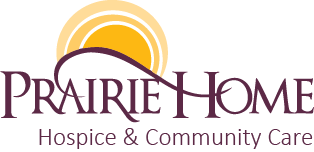Top 10 Hospice Myths
Myth #1: Hospice is a place.
Hospice is not a place but a philosophy of care. Wherever a patient calls home is where hospice care is provided: residence, assisted living facility, nursing home, inpatient facility (hospice house) or hospital.
Myth #2: Hospice patients cannot live longer than six months.
Once an individual becomes a patient at Prairie Home Hospice, he or she continues to receive services for as long as they are required and appropriate. Hospice services are NOT discontinued unless they are no longer necessary or appropriate, or the patient chooses to stop them. If a patient makes this decision, a revocation form is signed.
Myth #3: Hospice care is only for people with cancer or those who are bedridden or very ill.
Although many patients do have cancer, Prairie Home Hospice serves terminally ill patients of all ages, with all types of progressive and chronic diseases. Many of our patients are able to enjoy life as much as they did before their diagnoses. This fact is especially true if care is accessed early in their illness. Our patients are seen by trained healthcare professionals who can address their medical conditions and support family members. Additionally, hospice care can include complementary therapy such as pet visits.
Myth #4: Hospice care is expensive.
Hospice care is actually less expensive than care provided in a traditional medical setting. Additionally, Medicare, Medicaid and most other insurances cover the cost of hospice care. As a community-based, not-for-profit organization, Prairie Home Hospice has upheld a 35-year commitment to providing hospice care to all who are in need of hospice care in our community, regardless of their ability to fully pay for the care they receive.
Myth #5: All Hospice providers are the same.
All hospice providers are not the same. Differences may include the number of visits that members of the hospice team will make and/or the amount of time they allow for those visits; their efforts to ensure that the patient’s needs and preferences drive the plan of care; their efforts to respect patient and family preferences; their efforts to create a personal care team to serve each patient/family; their efforts to understand what is most important to the patient and family; the “extra” services that may be available to the patient (pet therapy, massage therapy, aroma therapy, etc.); access to a hospice house; etc.
Myth #6: Hospice requires family members to provide care to patients.
In many instances, our staff trains family members to assist in the care of their loved ones. However, our team will create an individualized care plan that provides regular visits from members of our care team, based on the needs of the patient. An RN is also available 24/7 so that patients and/or family members can call for assistance or with questions at any time. In cases where the patient lives alone or family members are unable to assist with care, Prairie Home Hospice will work with the patient/family to provide the care that is needed to keep the patient at home for as long as possible. If that is no long possible, our team will work with the patient/family to find a residential option, which may include one of our hospice houses
Myth #7: Hospice means “nothing more can be done.”
When a cure is no longer an option, there is still a great deal that can be done to control symptoms, and provide care, comfort and support. The hospice team includes nurses, physicians, aides, social workers, chaplains, bereavement counselors and trained volunteers. Team members visit patients and families wherever they call home and are available 24/7 for support and care.
Myth #8: Hospice is just for the patient.
Hospice focuses on providing comfort, dignity and emotional support to the patient and their loved ones. Quality of life for all concerned is our highest priority. We are with you and beside you every step of the way.
Myth #9: My doctor will determine the appropriate hospice agency to provide my hospice care.
When hospice care is recommended, your doctor has a legal responsibility to provide you with information about ALL of the hospice agencies available to you – and must allow you to choose freely which hospice provider you feel best meets your needs, and they must respect your choice. Your doctor should never pressure you to choose one hospice over another. Once you choose a hospice agency to provide your hospice services, that hospice will work closely with your doctor(s) to coordinate your care and will have access to all of your medical records.
Myth #10: Once you go to hospice, you can’t change your mind or seek a cure.
Hospice patients always have the right to return to medical care that focuses on curing their disease at any time and for any reason. If a condition improves or the disease goes into remission, a patient can be discharged from hospice and go back to aggressive, curative measures. This is all based on patient choice. If a discharged patient wants to return to hospice care at a later date, Medicare, Medicaid and most private insurance companies will allow readmission.
The shared hospice myths examples are just a few of the many misconceptions regarding hospice care. Our hospice team is well-versed in openly discussing end-of-life wishes and can assist in developing plans to meet patients’ needs and preferences.
At Prairie Home Hospice, every day is devoted to caring for our patients and keeping them in the place they call home, whenever possible. We are dedicated to ensuring that patients and their families are able to make educated decisions about important healthcare matters. For more information, please contact us at (507)337-0080 or check out our website at www.prairiehomehospice.org.


